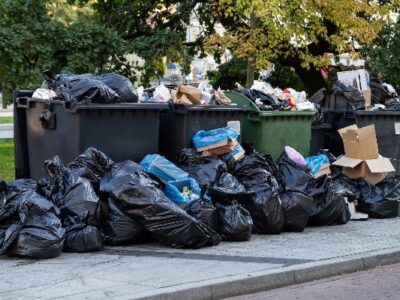Let the 10 R’s shape your purchases
There was a point in time when goods were made from animals, plants, wood, etc. Anything and everything that was thrown out would eventually break down and return to the Earth. Unfortunately, much of our stuff no longer follows that life cycle; in fact, it doesn’t follow a cycle at all, but rather multiple, linear waste streams that are harmful to the Earth. Now, more than ever, humans are consuming more resources than we can replenish and have created excessive amounts of waste.
Aside from the things we need, such as clean food and water, we just like having stuff — and there’s a reason for this! Dopamine, a neurotransmitter in the brain, is released when we buy things. Possessing the newest phone and wearing the newest clothes can create feelings of economic and social prosperity. But after the purchase has been made, those feelings subside, and the realization sets in that perhaps materialism had taken over.
When buying goods, we often forget the resources and labor that go into creating them and the process it takes for those products to end up in our hands and our homes. It does not help that businesses are not always honest or upfront about how their products come to be and their social and environmental performance. It might even make us reconsider our purchases.
In this day and age, not having certain things is not a realistic way of life nor am I suggesting anyone to live like a minimalist. However, stopping the pattern of overconsumption starts with small changes and conscious consumerism. You might be familiar with the 3 R’s? In reality, there are 10 and they’re a great way to get started.
-
RETHINK: Ask yourself… Do I really need this? Will I use it more than once or is it just a good deal? If the answer is yes, is it something that you can buy secondhand or borrow from a friend? You might already have something similar at home.
-
REFUSE: Stop plastic waste at the source by just saying no. There might be a more sustainable option.
-
REDUCE: Try not to create unnecessary waste by only buying what you need and focusing on what you actually use.
-
REUSE: If you can, continue to use the things you already have to their full extent and keep them so you can…
-
REFILL: DIY your own products or fill them with something else.
-
REPAIR: Don’t throw away slightly damaged things, try to fix them or find someone who can.
-
REPURPOSE: If you’re unable to fix it or reuse it, try and give it a second life by turning it into something new.
-
RESELL/REGIFT: Unfortunately, most of our donated items end up in landfills, to ensure that doesn’t happen, try selling items online or gifting them to a friend or loved one.
-
ROT: Compost your kitchen scraps so they can decompose and become nutrient-rich soil. Composting is a great way to decrease food waste in landfills and reduce greenhouse gas emissions.
-
RECYCLE: Always try to recycle to the best of your ability, however, it should be a last resort!
